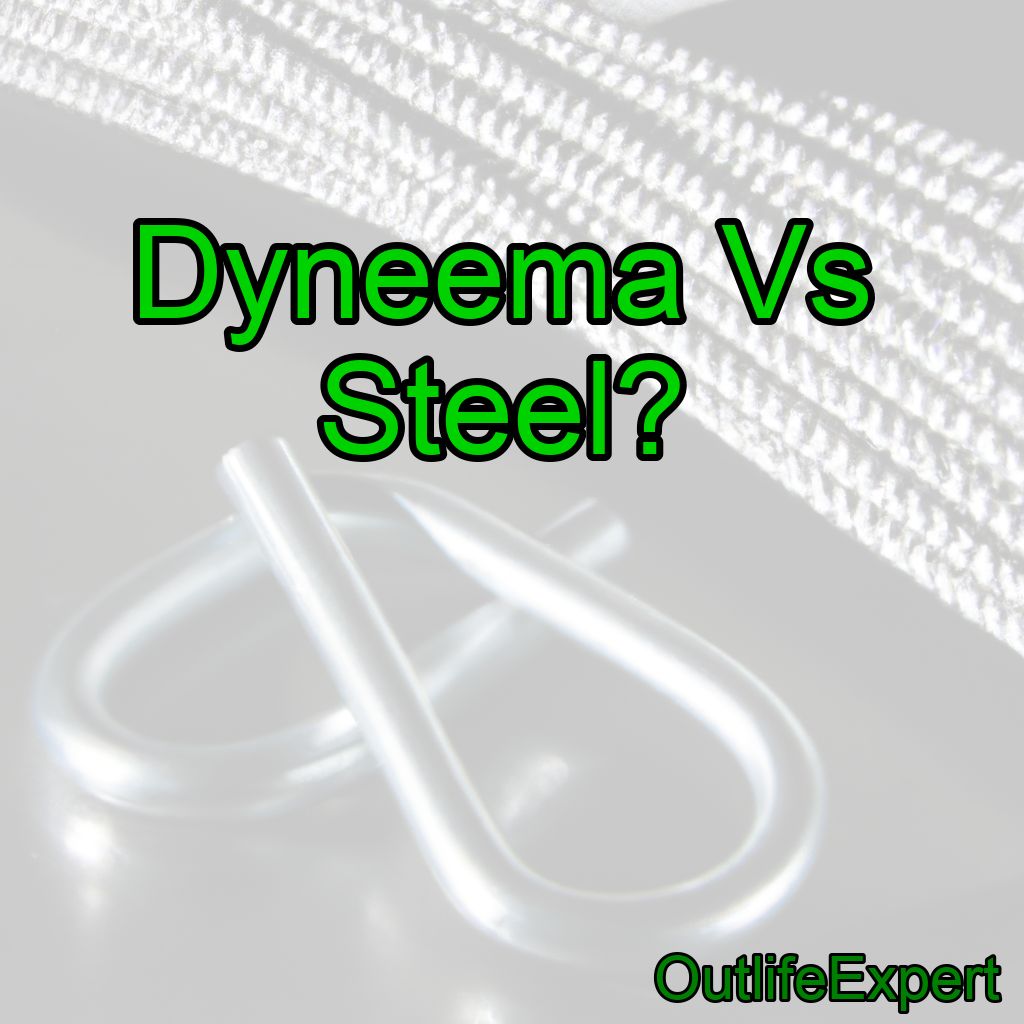Dyneema vs Steel: Which is better?
To answer this question, let’s first compare these two materials in various aspects, such as strength, weight, corrosion resistance, and versatility.
Strength
Dyneema
Dyneema is an ultra-high molecular weight polyethylene (UHMWPE) fiber that boasts incredible strength. In fact, it’s considered to be the world’s strongest fiber, with a tensile strength up to 15 times that of steel. It’s this unparalleled strength that makes Dyneema a popular choice for applications like ropes, slings, and body armor.
Steel
Steel, an alloy of iron and carbon, has long been the go-to material for construction and manufacturing. It’s known for its impressive tensile strength and durability, which is why it’s used in everything from bridges, buildings, and cars to weapons and machinery.
Weight
Dyneema
One of the most significant advantages of Dyneema over steel is its lightweight nature. Dyneema fiber is incredibly lightweight, allowing it to outperform steel in strength-to-weight ratio comparisons. This makes it ideal for applications where weight is a critical factor, such as aerospace, maritime, and sports equipment.
Steel
Steel, on the other hand, is significantly heavier than Dyneema. While its strength is undeniably impressive, the added weight can be a drawback in certain applications. For example, in industries like aerospace and automotive, where reducing weight is essential for fuel efficiency, Dyneema would be a more suitable choice.
Corrosion Resistance
Dyneema
Dyneema fibers are highly resistant to chemicals, UV radiation, and moisture, which means they won’t corrode or degrade over time. This is a significant advantage in applications where exposure to harsh environmental conditions is unavoidable, such as maritime and outdoor industries.
Steel
Despite its many strengths, steel is susceptible to corrosion, especially when exposed to water and oxygen. While there are types of steel, such as stainless steel, that offer increased corrosion resistance, they still don’t match the corrosion-resistant properties of Dyneema.
Versatility
Dyneema
Dyneema’s unique properties make it a versatile material suitable for a wide range of applications. Its lightweight nature, high strength, and resistance to environmental factors make it an excellent choice for industries like aerospace, maritime, sports equipment, automotive, and personal protective equipment.
Steel
Steel is an incredibly versatile material, with numerous applications across various industries. Its strength and durability make it suitable for use in construction, automotive, manufacturing, and many other applications. However, its weight and susceptibility to corrosion can limit its utility in certain situations.
Applications of Dyneema
Ropes and Slings
Dyneema’s high strength-to-weight ratio, coupled with its resistance to abrasion and environmental factors, make it an ideal material for ropes and slings used in industries like maritime, construction, and rescue operations.
Body Armor and Ballistic Protection
Dyneema’s impressive strength and lightweight nature make it a popular choice for personal protective equipment, such as body armor and helmets. Dyneema materials are used by military and law enforcement personnel worldwide, providing increased protection without significantly adding to the weight of their gear.
Sporting Goods
In the world of sports, where every ounce counts, Dyneema’s lightweight and strong properties make it a sought-after material for items like racing sails, climbing ropes, and fishing lines.
Applications of Steel
Construction
Steel’s incredible strength and durability make it a staple in construction. It’s used to build everything from skyscrapers and bridges to highways and tunnels, ensuring these structures can withstand the test of time.
Automotive
Steel is used extensively in the automotive industry for its strength and affordability. It’s used to make car bodies, chassis, and various components, providing safety and reliability to drivers worldwide.
Manufacturing
Steel’s versatility, strength, and relatively low cost make it a popular choice for manufacturing various products, from consumer goods like appliances and tools to industrial machinery and equipment.
Conclusion: Dyneema vs Steel – Which is Better?
Ultimately, the choice between Dyneema and steel boils down to the specific application and requirements of the project.Both materials have their strengths and weaknesses, making them ideal for different situations. To help summarize, here are 10 facts about Dyneema and steel:
1. Dyneema is the world’s strongest fiber, with a tensile strength up to 15 times that of steel.
2. Steel is an incredibly strong and durable material, making it ideal for construction and manufacturing.
3. Dyneema is significantly lighter than steel, giving it a superior strength-to-weight ratio.
4. Steel is heavier than Dyneema, which can be a drawback in certain applications.
5. Dyneema is highly resistant to chemicals, UV radiation, and moisture, making it corrosion-resistant.
6. Steel is susceptible to corrosion, particularly when exposed to water and oxygen.
7. Dyneema is a versatile material with applications in aerospace, maritime, sports equipment, and personal protective equipment.
8. Steel is also versatile, with use in construction, automotive, manufacturing, and many other applications.
9. Dyneema excels in applications where lightweight and high strength are critical, such as ropes, slings, and body armor.
10. Steel’s strength and affordability make it a popular choice for constructing buildings, vehicles, and various consumer goods.
In conclusion, neither Dyneema nor steel is inherently better than the other; instead, the choice between the two should be based on the specific needs and requirements of your project. Both materials offer unique benefits, making them indispensable in their respective industries.




